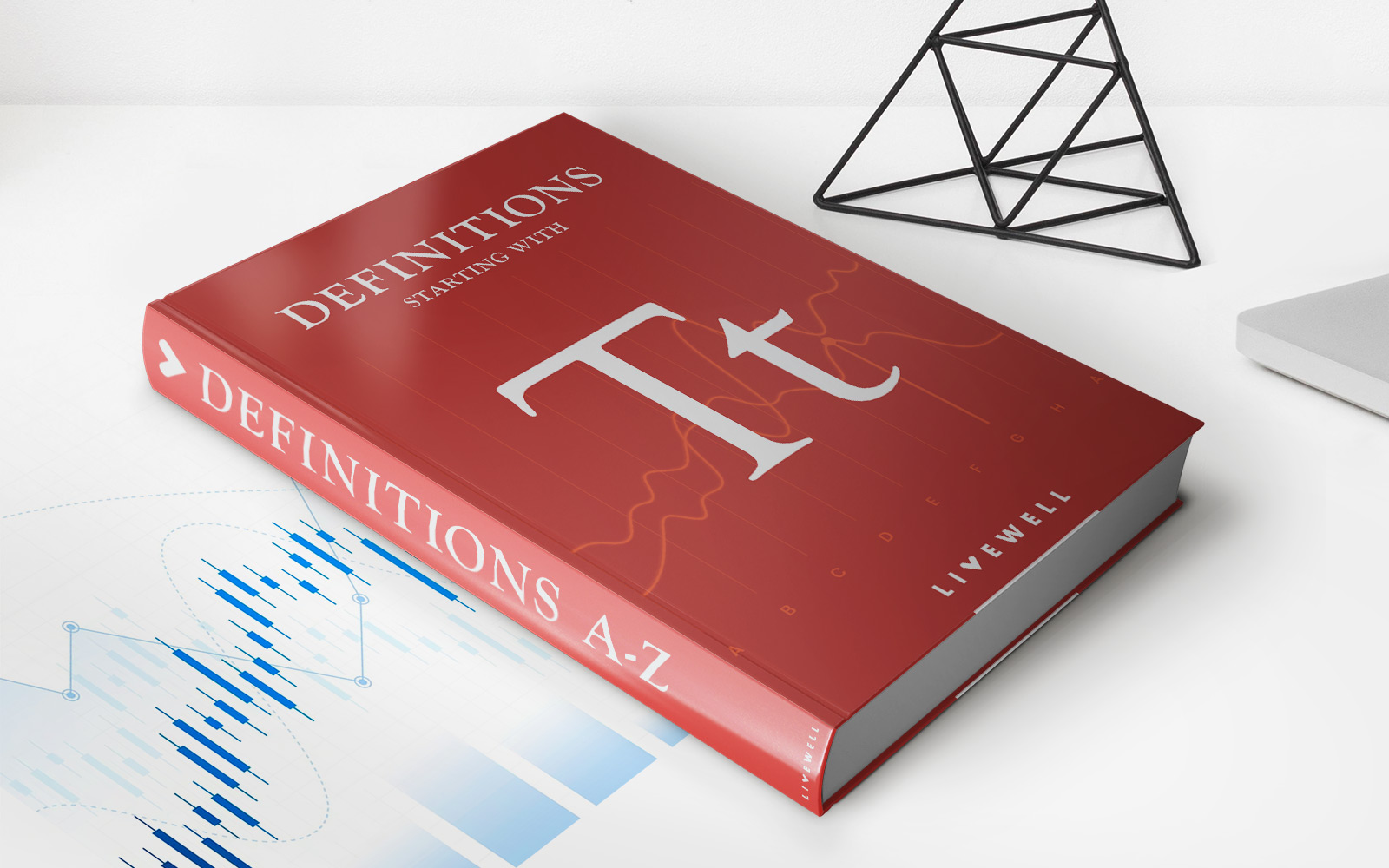

Finance
What Does Temporary Credit Adjustment Mean
Modified: January 15, 2024
Learn what temporary credit adjustment means in the finance industry and how it can impact your financial situation. Gain insights and make informed decisions.
(Many of the links in this article redirect to a specific reviewed product. Your purchase of these products through affiliate links helps to generate commission for LiveWell, at no extra cost. Learn more)
Table of Contents
- Introduction
- Definition of Temporary Credit Adjustment
- Reasons for Temporary Credit Adjustment
- Impact of Temporary Credit Adjustment on Borrowers
- How Temporary Credit Adjustment is Calculated
- Examples of Temporary Credit Adjustment
- Pros and Cons of Temporary Credit Adjustment
- Steps to Request Temporary Credit Adjustment
- Conclusion
Introduction
Welcome to the world of finance, where the concept of credit plays a pivotal role in determining the financial health of individuals and businesses alike. In this dynamic landscape, creditworthiness is often subject to various factors, including income, debt, and payment history. However, there are instances when borrowers may face temporary challenges that affect their ability to meet their financial obligations, leading to the need for a temporary credit adjustment.
A temporary credit adjustment, also known as a credit accommodation, is a provision offered by lenders to borrowers who are experiencing financial difficulties. It serves as a temporary relief measure, allowing borrowers to adjust their repayment terms or receive temporary forbearance on their credit obligations.
This article will delve into the intricacies of temporary credit adjustments, exploring their definition, reasons for implementation, impact on borrowers, calculation methods, examples, and the pros and cons associated with this financial instrument. Additionally, we will provide you with practical steps to request a temporary credit adjustment if you find yourself in need.
Understanding the concept of temporary credit adjustment is crucial, as it empowers borrowers to navigate challenging financial situations, obtain relief, and ultimately regain control over their creditworthiness. So, let’s delve deeper into the world of temporary credit adjustments and shed light on how they can help individuals and businesses weather financial storms.
Definition of Temporary Credit Adjustment
A temporary credit adjustment refers to a temporary modification or accommodation made by lenders to borrowers who are facing financial hardships. It is a proactive measure taken by lenders to assist borrowers in managing their credit obligations during challenging times. This adjustment can take several forms, such as extending the repayment period, reducing the interest rate, or temporarily suspending payments altogether.
The purpose of a temporary credit adjustment is to provide some relief to borrowers who are temporarily unable to meet their financial commitments due to unforeseen circumstances, such as job loss, medical emergencies, or natural disasters. This adjustment can help alleviate the immediate financial burden on borrowers and prevent default or delinquency on their credit obligations.
While temporary credit adjustments are typically offered for a limited period, they can provide borrowers with the breathing space necessary to stabilize their financial situations and regain control over their creditworthiness. It is important to note that temporary credit adjustments differ from permanent modifications, which involve long-term alterations to the terms of credit agreements.
Lenders may offer temporary credit adjustments on various types of credit, including loans, credit cards, mortgages, and lines of credit. The eligibility criteria for obtaining a temporary credit adjustment may vary depending on the lender’s policies, the nature of the credit agreement, and the borrower’s specific circumstances.
It is important to communicate openly and promptly with lenders about financial challenges to explore the possibility of temporary credit adjustments. Lenders are often willing to work with borrowers in finding viable solutions to ensure the continuity of the credit relationship while minimizing the negative impact on both parties.
Reasons for Temporary Credit Adjustment
There are various reasons why borrowers may find themselves in need of a temporary credit adjustment. These reasons can range from unexpected life events to economic downturns. Let’s explore some common scenarios where borrowers may require a temporary credit adjustment:
- Job Loss or Reduced Income: Sudden unemployment or a significant reduction in income can make it challenging for borrowers to meet their financial obligations. In such cases, a temporary credit adjustment can provide relief by adjusting repayment terms or temporarily suspending payments until the borrower regains financial stability.
- Medical Emergencies: Unforeseen medical expenses can place a significant financial burden on individuals and families. A temporary credit adjustment can help alleviate the strain by modifying repayment terms or offering forbearance, allowing borrowers to focus on their health and recovery.
- Natural Disasters: Natural disasters such as hurricanes, earthquakes, or floods can cause extensive property damage and disrupt the financial stability of affected individuals. Lenders may offer temporary credit adjustments to borrowers in affected areas, providing them with the necessary flexibility to manage their financial recovery.
- Divorce or Separation: The dissolution of a marriage or partnership can have significant financial ramifications. Adjusting credit repayment terms through a temporary credit adjustment can ease the financial strain during this transitional period, allowing individuals to adapt to their new financial circumstances.
- Unexpected Expenses: Unforeseen expenses like major car repairs, home repairs, or educational expenses can strain a borrower’s financial resources. A temporary credit adjustment can help borrowers manage these unexpected costs by modifying repayment terms.
It’s important to note that lenders understand that life is unpredictable, and financial difficulties can arise for various reasons beyond a borrower’s control. Temporary credit adjustments provide a safety net during challenging times, offering borrowers the opportunity to navigate through financial hardships while maintaining a positive credit relationship with their lenders.
Impact of Temporary Credit Adjustment on Borrowers
Temporary credit adjustments can have a significant impact on borrowers, providing them with much-needed relief and stability during challenging financial circumstances. Let’s take a closer look at the potential impacts of temporary credit adjustments:
- Financial Relief: The primary impact of a temporary credit adjustment is the immediate financial relief it offers to borrowers. By modifying repayment terms or temporarily suspending payments, borrowers can allocate their financial resources towards other essential expenses, such as housing, food, and healthcare.
- Maintaining Creditworthiness: With a temporary credit adjustment in place, borrowers can avoid defaulting on their credit obligations. This helps protect their credit score and prevents negative marks on their credit report, ensuring the continuity of their creditworthiness in the long run.
- Reduced Stress and Anxiety: Financial difficulties can take a toll on a borrower’s mental and emotional well-being. Temporary credit adjustments provide borrowers with peace of mind, reducing stress and anxiety associated with meeting financial commitments during challenging times.
- Time for Financial Recovery: Temporary credit adjustments allow borrowers to focus on recovering from their financial hardships. Whether it’s finding a new job, managing medical expenses, or rebuilding after a natural disaster, borrowers can dedicate their time and energy to stabilize their finances without the added pressure of unmanageable credit obligations.
- Preserving Relationships with Lenders: By proactively seeking a temporary credit adjustment, borrowers demonstrate a commitment to honoring their credit obligations. This helps maintain a positive relationship with lenders and opens doors for future credit opportunities, should the borrower’s financial situation improve.
While temporary credit adjustments provide immediate relief, borrowers should be mindful of the potential long-term implications. The adjustments may result in extended repayment periods or increased overall interest costs, depending on the specific terms negotiated with the lender. Borrowers should carefully consider these factors and assess the impact of the adjustment on their overall financial picture.
Ultimately, the impact of a temporary credit adjustment on borrowers can be highly positive, providing them with the necessary breathing space to navigate financial challenges and regain control over their creditworthiness.
How Temporary Credit Adjustment is Calculated
The calculation of a temporary credit adjustment can vary depending on the lender, the type of credit, and the specific circumstances of the borrower. However, there are a few common methods used to determine the adjustment. Let’s explore these methods:
- Interest Rate Reduction: In some cases, a temporary credit adjustment involves reducing the interest rate on the credit obligation. The lender may agree to lower the interest rate temporarily, which can result in lower monthly payments for the borrower. The specific reduction percentage will depend on the negotiations between the borrower and the lender.
- Extended Repayment Period: Another approach to calculating a temporary credit adjustment is by extending the repayment period. This means that the borrower will have a longer time to repay the credit, resulting in smaller monthly payments. The extension of the repayment period can be determined based on the borrower’s financial situation and the lender’s policies.
- Payment Suspension or Forbearance: In more severe financial circumstances, a temporary credit adjustment may involve a suspension or forbearance of payments for a specific period. During this time, the borrower is not required to make any payments. The missed payments are either added to the end of the loan term or adjusted in a way agreed upon by the borrower and lender.
- Partial Payments: Temporary credit adjustments may also involve the acceptance of partial payments from the borrower for a limited period. This provides some relief to the borrower while still maintaining some level of payment towards the credit obligation. The specific amount and duration of the partial payments will be determined through negotiations with the lender.
It’s important for borrowers to communicate openly and promptly with their lenders to discuss the available options for temporary credit adjustments. Lenders will assess the borrower’s financial situation and work together to determine the best approach for providing temporary relief while still ensuring the long-term sustainability of the credit relationship.
Keep in mind that each lender may have specific guidelines and criteria for calculating a temporary credit adjustment. It’s advisable for borrowers to consult their lenders and carefully review any proposed adjustments to fully understand the implications before agreeing to the terms.
Remember, the goal of a temporary credit adjustment is to provide temporary relief to borrowers facing financial hardships while maintaining the integrity of the credit agreement. Communication and cooperation with the lender are key to reaching a mutually beneficial solution.
Examples of Temporary Credit Adjustment
Temporary credit adjustments can take various forms, depending on the borrower’s circumstances and the lender’s policies. Here are a few examples of how temporary credit adjustments may be implemented:
- Loan Modification: For borrowers facing a temporary financial setback, a lender may modify the loan terms, such as reducing the interest rate, extending the loan tenure, or adjusting the monthly payments for a certain period. This can help borrowers maintain their loan payments while they work towards regaining their financial stability.
- Credit Card Payment Forbearance: Credit card issuers may offer temporary forbearance to borrowers who are unable to meet their credit card payments due to extenuating circumstances. This could involve suspending the minimum payment requirement for a specific period or adjusting the payment amount based on the borrower’s financial situation.
- Mortgage Forbearance: Homeowners who experience temporary financial hardship, such as job loss or illness, may qualify for a mortgage forbearance. This allows them to suspend or reduce their mortgage payments for a defined period while they work to improve their financial situation.
- Student Loan Deferment or Income-Driven Repayment Plan: Borrowers with student loans may be eligible for temporary relief through options like loan deferment or income-driven repayment plans. Loan deferment allows borrowers to temporarily suspend their loan payments, while income-driven repayment plans adjust the monthly payments based on the borrower’s income and family size.
- Business Loan Restructuring: In the case of businesses facing financial challenges, lenders may offer temporary credit adjustments, such as extending repayment terms, reducing interest rates, or adjusting payment schedules to provide temporary relief until the business can recover financially.
These examples illustrate some of the temporary credit adjustments that borrowers across different credit types may be eligible for. It’s important for borrowers to consult with their respective lenders to explore the specific options available to them based on their unique circumstances.
When considering a temporary credit adjustment, borrowers should assess the potential long-term impact of these adjustments on their overall financial situation. While they provide temporary relief, they may also result in extended repayment periods, increased interest costs, or additional terms and conditions that need to be carefully understood and evaluated.
Remember, temporary credit adjustments aim to provide borrowers with a viable solution during financial hardships, so open communication with lenders is crucial to finding the most suitable option for every borrower’s specific needs.
Pros and Cons of Temporary Credit Adjustment
Temporary credit adjustments can offer borrowers much-needed relief during challenging financial situations. However, it’s essential to consider the pros and cons before pursuing this option. Let’s explore both sides:
Pros:
- Financial Relief: Temporary credit adjustments provide immediate relief to borrowers facing financial hardships by temporarily lowering payments or suspending them altogether.
- Maintaining Creditworthiness: By working with lenders to obtain temporary credit adjustments, borrowers can avoid defaults or delinquencies that can negatively impact their credit scores and long-term creditworthiness.
- Flexibility: Temporary credit adjustments offer borrowers the flexibility to manage their financial situation during challenging times, allowing them to allocate resources towards other essential expenses.
- Preserving Relationships with Lenders: Proactively seeking temporary credit adjustments demonstrates a commitment to honoring financial obligations, which can help preserve positive relationships with lenders and potentially open doors for future credit opportunities.
- Opportunity for Financial Recovery: Temporary credit adjustments provide borrowers with the breathing space to recover financially, whether it’s finding new employment, managing medical expenses, or rebuilding after a significant life event.
Cons:
- Potential Long-Term Cost: While temporary credit adjustments provide immediate relief, borrowers should consider the long-term implications. Adjustments can result in extended repayment periods, increased overall interest costs, or changes to the terms of the credit agreement.
- Eligibility Requirements: Not all borrowers may qualify for a temporary credit adjustment. Lenders typically assess a borrower’s financial situation and determine eligibility based on specific criteria.
- Additional Documentation and Processes: Seeking a temporary credit adjustment often involves providing additional documentation and going through formal processes with lenders. This requires time and effort on the part of the borrower.
- Potential Impact on Credit Score: Depending on how the adjustment is reported, there may be a temporary impact on the borrower’s credit score. It’s important to understand how the adjustment will be reflected on credit reports and how it may affect future credit applications.
- Limited Duration: Temporary credit adjustments are designed as short-term relief measures. Borrowers should be prepared for the adjustment to be in effect for a specific period of time before returning to their original credit terms.
When considering a temporary credit adjustment, borrowers should carefully weigh the pros and cons to assess whether it aligns with their financial goals and circumstances. It’s advisable to consult with lenders, thoroughly review proposed adjustments, and consider seeking financial guidance or advice when making this decision.
Remember, temporary credit adjustments serve as a valuable tool to assist borrowers during challenging times. However, balancing the immediate relief with the potential long-term considerations is essential to make an informed decision in the best interest of your financial well-being.
Steps to Request Temporary Credit Adjustment
If you find yourself in a situation where you need a temporary credit adjustment, here are some steps to follow when requesting one:
- Assess Your Financial Situation: Take a thorough look at your financial circumstances and determine if a temporary credit adjustment is necessary. Evaluate your income, expenses, and any extenuating circumstances that may be impacting your ability to meet your credit obligations.
- Contact Your Lender: Reach out to your lender and inform them of your financial challenges. It’s crucial to establish open and transparent communication. Discuss your situation and inquire about the options available for temporary credit adjustments.
- Provide Supporting Documentation: Your lender may require specific documentation to support your request for a temporary credit adjustment. This may include proof of income loss, medical bills, or any other relevant documents that demonstrate your financial hardship.
- Understand Available Options: Work with your lender to understand the available options for temporary credit adjustments. Discuss potential adjustments such as interest rate reduction, loan term extension, or payment suspension, and evaluate their impact on your overall financial situation.
- Negotiate Terms: Engage in constructive negotiations with your lender to determine the terms of the temporary credit adjustment. Ensure that you fully understand the new terms, including any changes to interest rates, payment schedules, or other conditions that may apply.
- Get Agreement in Writing: Once you and your lender have agreed upon the terms of the temporary credit adjustment, request a written agreement outlining the details of the adjustment. Keep a copy for your records.
- Adhere to the New Terms: It’s essential to honor the new terms of the temporary credit adjustment by making timely payments or following the agreed-upon adjustment plan. This will help you maintain a positive credit relationship with your lender.
- Monitor Your Credit Reports: Regularly review your credit reports to ensure that the temporary credit adjustment is accurately reported and does not have any unintended negative effects on your credit score or future credit opportunities.
- Reassess Your Financial Situation: Periodically reassess your financial situation to determine if you still need the temporary credit adjustment. If your circumstances improve, inform your lender and discuss the possibility of returning to the original credit terms.
Remember, each lender may have specific guidelines and processes for requesting a temporary credit adjustment. It’s crucial to establish clear and open communication with your lender throughout the process and advocate for the solution that best aligns with your financial needs.
By taking proactive steps and working collaboratively with your lender, you can increase your chances of obtaining a temporary credit adjustment that provides the necessary relief to navigate through challenging financial times.
Conclusion
Temporary credit adjustments are valuable tools that provide borrowers with much-needed relief during challenging financial circumstances. Whether it’s due to job loss, unexpected expenses, or other unforeseen events, temporary credit adjustments offer a lifeline to borrowers, helping them navigate through rough waters and maintain their financial stability.
In this article, we have explored the definition of temporary credit adjustment, the reasons for its implementation, its impact on borrowers, how it is calculated, and provided examples of its application across various credit types. We have also discussed the pros and cons of temporary credit adjustments and outlined the steps to follow when requesting one.
It’s important to remember that temporary credit adjustments are designed as short-term solutions, providing temporary relief to borrowers while they work towards improving their financial situations. Borrowers should carefully consider the potential long-term implications, such as extended repayment periods or increased overall interest costs, before pursuing a temporary credit adjustment.
Open and honest communication with lenders is key in determining the best course of action for each borrower’s unique circumstances. By assessing their financial situation, contacting their lender, providing necessary documentation, and negotiating terms, borrowers can increase their chances of obtaining a temporary credit adjustment that suits their needs.
It’s crucial to monitor the impact of the adjustment on credit reports and reevaluate the need for the adjustment as circumstances change. Building and maintaining positive relationships with lenders throughout this process is vital, as it can facilitate future credit opportunities and support a borrower’s long-term financial well-being.
In conclusion, temporary credit adjustment is a valuable tool that bridles short-term financial difficulties, allowing borrowers to regain their financial stability and move forward with confidence. By understanding the concept, exploring eligibility, and working closely with lenders, borrowers can navigate through challenging times and set the course for a brighter financial future.














